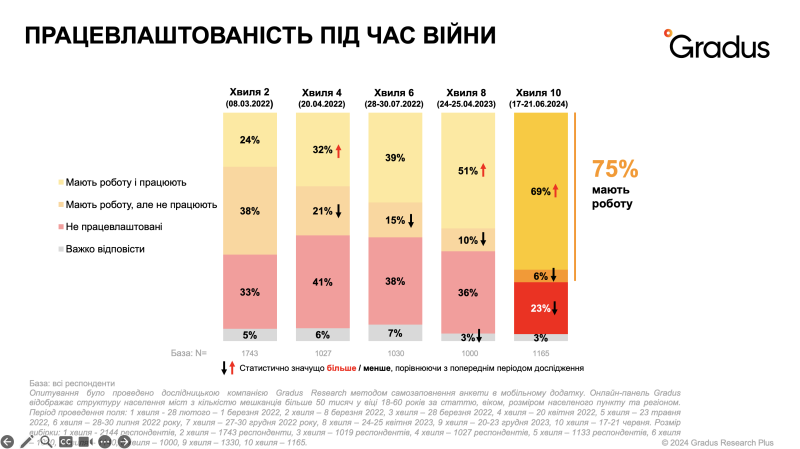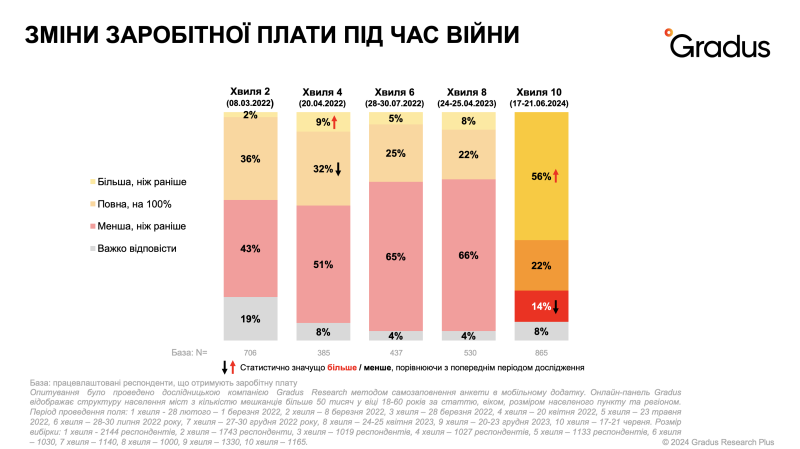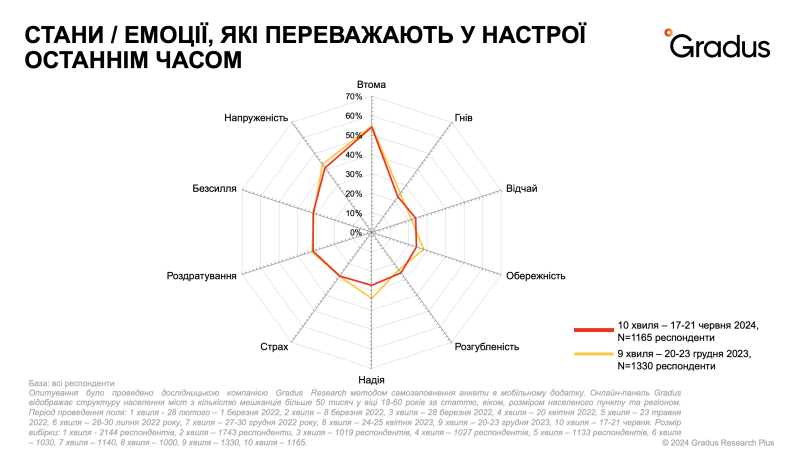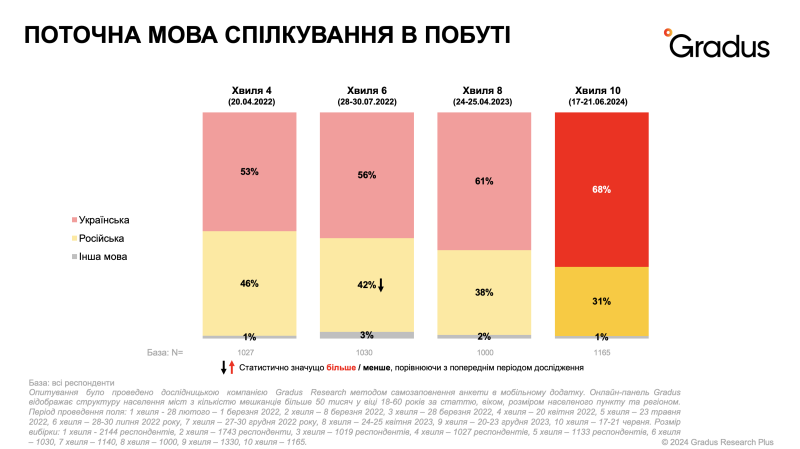
In Ukraine, the number of employed citizens is growing, despite the fatigue and tension that prevail in the mood of the population.
This was reported by the research company Gradus Research, which, as part of the Gradus of Society during War project, conducted the 10th wave of research to track the dynamics of changes since the beginning of the full-scale invasion.
Employment and income levels are growing
More and more Ukrainians surveyed have jobs and work full or part-time (69% of respondents declare this now, against 62% in December 2023).
Now watching
For comparison: the lowest employment rate was in March 2022 at 24% of respondents. Since then, it has been consistently increasing.

Photo: Gradus Research
Compared to pre-war times, Ukrainians' wages have increased. This was noted by significantly more respondents (56%) than in previous waves of the study.
For example, in December 2023, only 15% of Ukrainians surveyed noted an increase in income.

Photo: Gradus Research
— The facts of increasing employment and income levels can positively influence the decision of Ukrainians to return abroad. Having a job is one of the key factors for returning. Among the results, we also see an increase in intentions to stay in Ukraine if the situation worsens. Now the overwhelming majority (62%) of Ukrainians surveyed do not plan to move under such circumstances, — noted the founder and director of the research company Gradus Research Evgeniya Bliznyuk.
According to the sociologist, this is an important signal that improving economic factors can influence the situation even if security risks remain.
Trust in the Armed Forces of Ukraine remains high
Despite fatigue and the uncertain duration of the war, trust in the Ukrainian Armed Forces remains high, according to a study by Gradus Research.
Since the beginning of a full-scale war, this indicator has not changed significantly. Now it is at the level of 59%, while in 2022 it was 63%.
Military assistance from Western countries and the power of the Ukrainian Armed Forces — these are the two key guarantees of Ukraine’s victory in the war with Russia, which are highlighted by the surveyed citizens (61% and 58%, respectively). At the same time, respondents believe less in the cohesion of society as a guarantee of victory.
When compared with research data from the first days of a full-scale invasion, there is a significant drop in faith in the effectiveness of strengthening sanctions against the Russian Federation, as well as in the demoralization of the Russian army as a factor in the victory of Ukraine.
What do Ukrainians feel the most
Several emotions dominate the mood of Ukrainians, and they remain unchanged.
Fatigue continues to top this list: more than half of respondents (54%) experience this state.
Compared to the previous wave of the study, the level of tension among respondents has slightly decreased (41% vs. 43% at the end of 2023).
However, there is an increase in the level of disappointment (33% vs. 29% in December 2023).
The level of subjective stress has remained consistently high since April 2024 — at the level of 87-88%.

Фото: Gradus Research
Communication in Ukrainian
The share of those who communicate in Ukrainian in everyday life continues to grow. If in April 2022 there were 53% of such people, now the share of Ukrainian-speaking respondents is 68%.

Photo: Gradus Research
The survey as part of the Gradus Society during War project was conducted by the research company Gradus Research using self-completion of the questionnaire in the Gradus mobile application/online platform.
The sample reflects the population structure of cities with more than 50,000 residents aged 16-60 by gender, age, size of settlement and region, with the exception of temporarily occupied territories and territories of active hostilities. Sample size in the 10th wave of the survey: 1,165 respondents.

